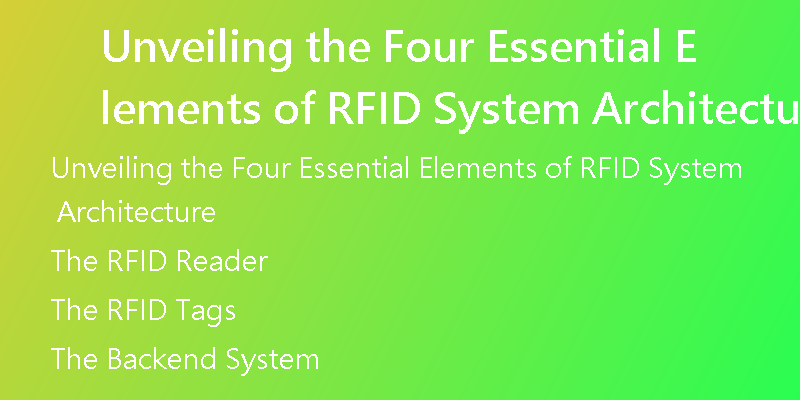Unveiling the Four Essential Elements of RFID System Architecture
Unveiling the Four Essential Elements of RFID System Architecture

RFID (Radio Frequency Identification) technology has revolutionized the way businesses track and manage their assets. With its ability to provide real-time data and streamline operations, RFID systems have become an indispensable tool in various industries. However, to maximize the benefits of RFID technology, it is crucial to understand the four essential elements that make up an effective RFID system architecture.
The RFID Reader
The RFID reader is the primary component of an RFID system. It emits radio waves and communicates with RFID tags to capture data. The reader can be either fixed or handheld, depending on the specific requirements of the application. It is responsible for reading the unique identifier stored in each RFID tag and transmitting the information to the backend system for further processing.
The RFID Tags
RFID tags are small electronic devices that contain a unique identifier and can be attached to or embedded in objects. They come in various forms, including adhesive labels, key fobs, and even passive tags that are powered by the energy transmitted from the RFID reader. The tags play a vital role in asset tracking and management, as they provide the necessary data for inventory control, asset identification, and location tracking.
The Backend System
The backend system of an RFID architecture serves as the central hub for managing and processing the data collected by the RFID reader. It includes a database that stores the collected information, as well as software applications and algorithms for data analysis and visualization. The backend system allows businesses to gain insights into their assets, improve operational efficiency, and make data-driven decisions that enhance overall performance.
The Communication Network
The communication network is the infrastructure that enables seamless communication between the RFID reader and the backend system. It can be wired or wireless, depending on the specific environment and requirements. The network ensures that the data captured by the RFID reader is transmitted securely and reliably to the backend system, enabling real-time tracking and monitoring of assets.
By understanding and implementing these four essential elements of RFID system architecture, businesses can unlock the full potential of RFID technology. They can gain real-time visibility into their assets, improve operational efficiency, reduce costs, and enhance customer satisfaction. Whether it is inventory management, supply chain optimization, or asset tracking, RFID systems have proven to be a game-changer for businesses across industries.
At ManTan Technology, we specialize in providing state-of-the-art RFID solutions tailored to the unique needs of our clients. Our advanced RFID readers, tags, backend systems, and communication networks ensure seamless integration and optimal performance. Contact us today to explore how RFID technology can revolutionize your business.


